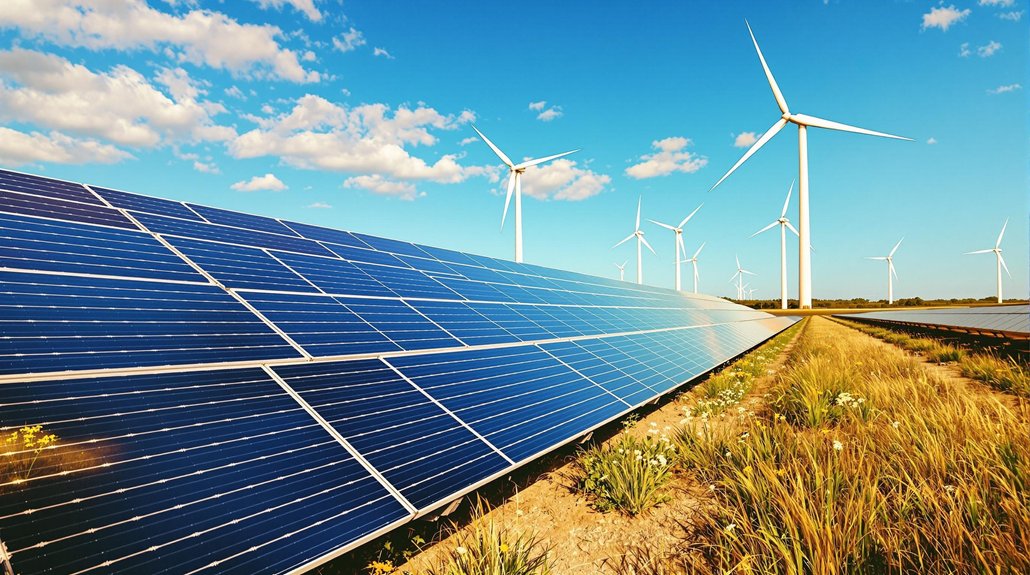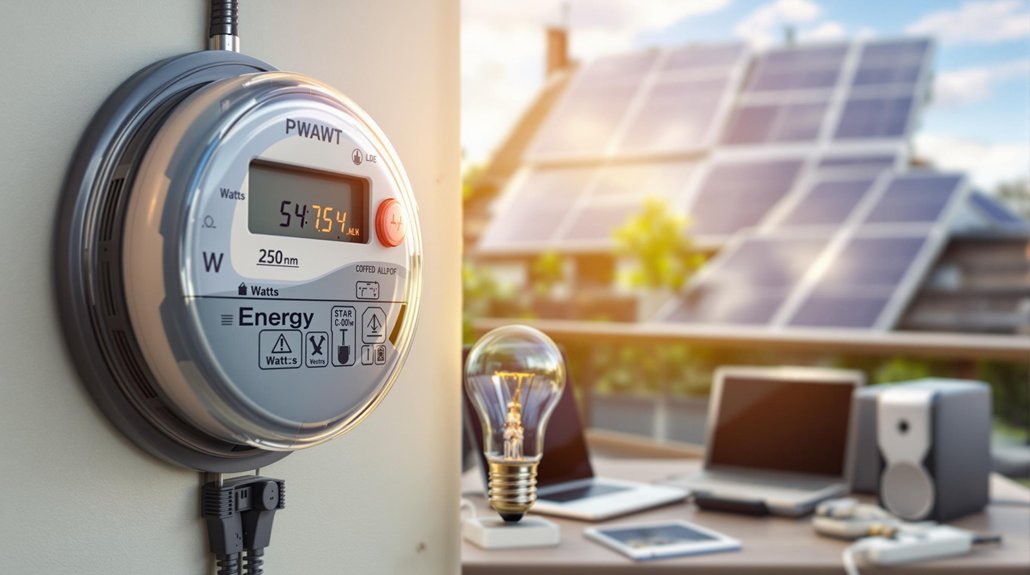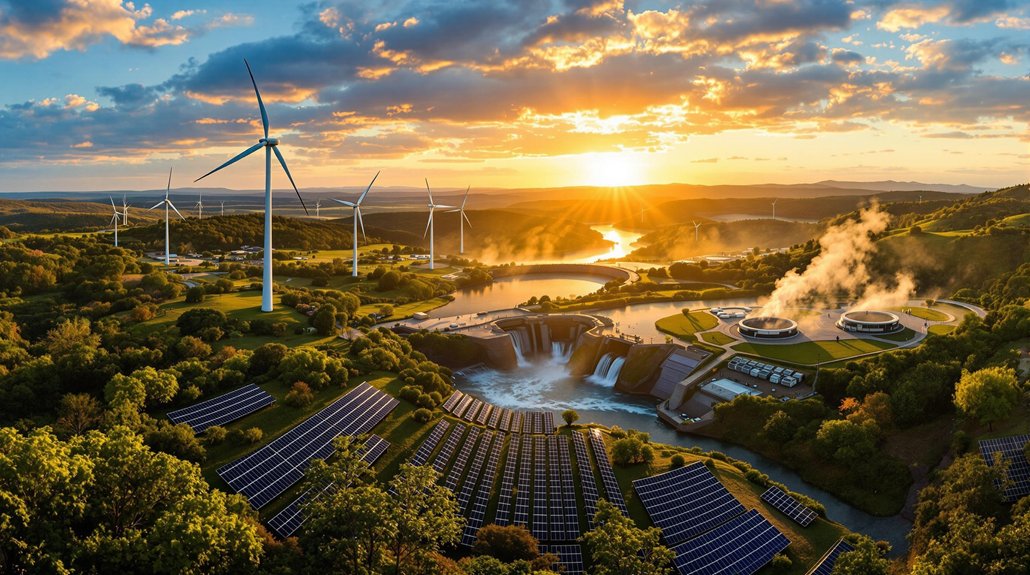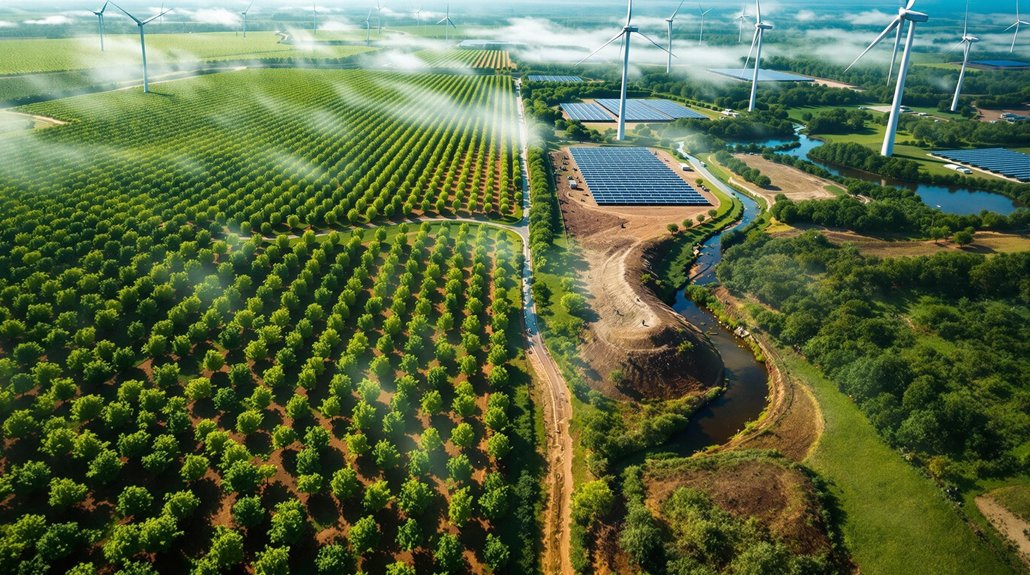Reducing carbon emissions in electricity generation requires a multi-faceted approach. The power sector contributes 25% of U.S. greenhouse gases, making it a critical target. Renewable energy sources like wind and solar produce zero direct emissions and can achieve 90% of needed reductions. Nuclear power offers another low-carbon option with emissions comparable to wind. Natural gas serves as a cleaner bridge fuel than coal. Additional solutions include carbon capture technology and smart grid systems.
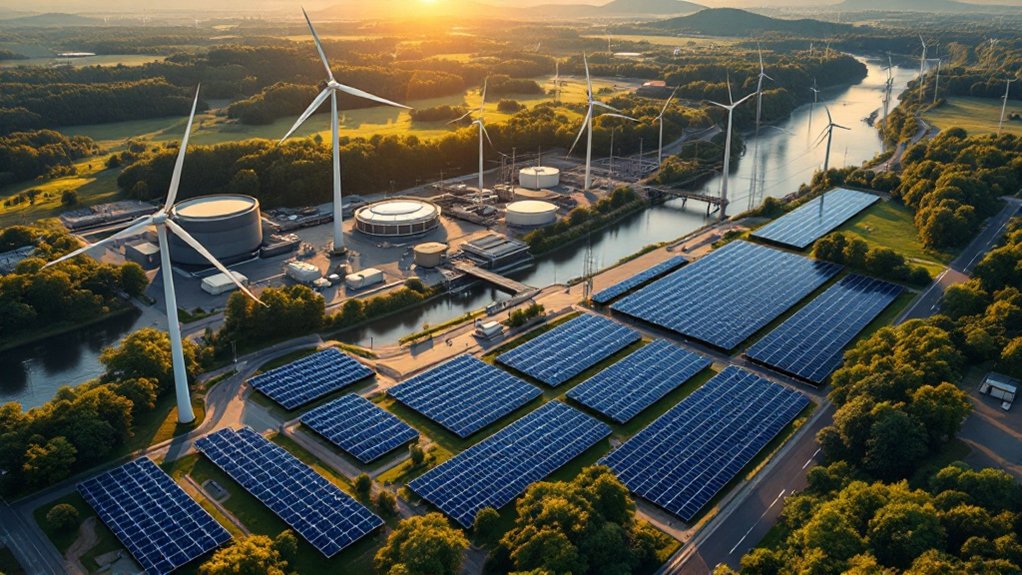
The global effort to combat climate change has placed electricity generation at the center of carbon reduction strategies. Power plants that burn fossil fuels contribute greatly to greenhouse gas emissions. The electric power sector accounts for 25% of U.S. greenhouse gas emissions, highlighting the need for cleaner alternatives.
Renewable energy sources offer a promising solution. Wind, solar, hydropower, and geothermal energy produce zero direct carbon emissions. Scientists say renewables can deliver over 90% of needed reductions in energy-related carbon emissions. Hydropower facilities provide additional benefits like flood control and water supply. These renewable sources are becoming increasingly cost effective as technology advances make them more efficient and affordable.
The path to a carbon-free future runs through renewable energy, offering both climate protection and valuable co-benefits.
Nuclear power is another low-carbon option. Nuclear plants don’t emit direct CO2 during operation. Nuclear power produces similar life-cycle emissions to wind energy and lower emissions than solar technologies. However, they come with challenges related to waste management and safety concerns. Still, many experts include nuclear energy in their plans for achieving carbon neutrality.
Natural gas serves as a bridging fuel between coal and cleaner options. In 2021, CO2 emissions from coal plants were 50% higher than those from natural gas plants. Advanced technologies like combined cycle gas turbines make natural gas generation more efficient. Yet, natural gas still contributes to greenhouse gas emissions, just less than coal.
Carbon capture and storage (CCS) technology could help reduce emissions from existing fossil fuel plants. CCS captures CO2, transports it, and stores it underground. The implementation of carbon pricing mechanisms can make CCS technology more economically viable for power companies. Despite its potential, CCS faces obstacles including high costs and finding suitable storage locations.
Electrification and energy efficiency measures work together to reduce emissions. Smart grid technologies help optimize electricity distribution. Demand-side management cuts peak load and overall energy use.
Emerging technologies are expanding clean energy options. Advanced energy storage systems help manage intermittent renewable power. Small modular reactors may offer safer nuclear options. Green hydrogen and enhanced geothermal systems show promise for future power generation.
Effective policies and international cooperation will be essential to drive the shift to low-carbon electricity generation and meet global climate goals.
Frequently Asked Questions
How Do Carbon Capture Technologies Affect Electricity Generation Costs?
Carbon capture technologies greatly increase electricity generation costs.
They boost plant construction expenses by 50-100%, adding $1000-2000 per kilowatt. Operating costs rise 30-70% due to higher fuel needs.
This translates to a 30-80% jump in wholesale electricity prices. For consumers, it means 2-5 cents more per kilowatt-hour.
The technology’s expense makes coal and gas plants less competitive against renewable energy options.
Can Nuclear Power Completely Replace Fossil Fuels?
Nuclear power can’t completely replace fossil fuels on its own.
While it provides reliable, carbon-free electricity, challenges exist. These include high costs, long construction times, and uranium supply limitations.
Nuclear works best as part of a mixed energy system with renewables. It’s excellent for baseload power but less flexible for transportation and some industrial uses that currently rely on fossil fuels.
What Role Do Smart Grids Play in Emissions Reduction?
Smart grids play an essential role in reducing emissions. They enable 25-30% higher renewable energy integration and cut transmission losses by up to 30%.
Smart meters help households reduce energy use by 3-5%, while demand response programs shift 10% of usage to off-peak hours.
Additionally, these systems improve grid resilience, extend equipment life, and allow electric vehicles to charge intelligently, further lowering the carbon footprint of electricity use.
How Long Until Renewable Energy Becomes Our Primary Source?
Renewable energy could become the world’s primary electricity source by 2050, experts predict. Current growth rates show renewables reaching 35% of global generation by 2025.
In some countries, the shift might happen sooner. The U.S. expects solar generation to grow 75% by 2025.
Cost declines, government incentives, and climate concerns are speeding up adoption, despite challenges like grid limitations and intermittency issues.
Who Bears the Financial Burden of Transitioning to Low-Carbon Electricity?
The financial burden of shifting to low-carbon electricity falls on multiple groups.
Consumers often pay higher utility rates. Utility companies make large investments in new infrastructure. Governments provide subsidies and funding through taxpayer money. Private companies face increased costs to reduce emissions.
Low-income households typically feel the greatest impact from rate increases, while investors see both risks and opportunities in the changing energy landscape.
